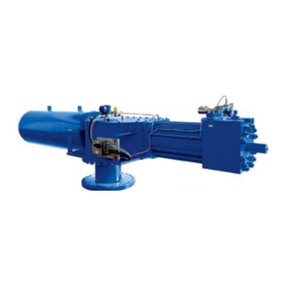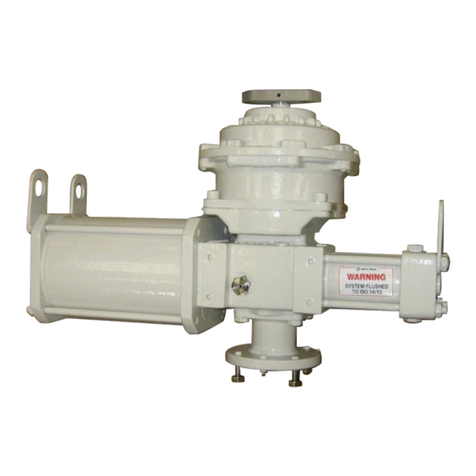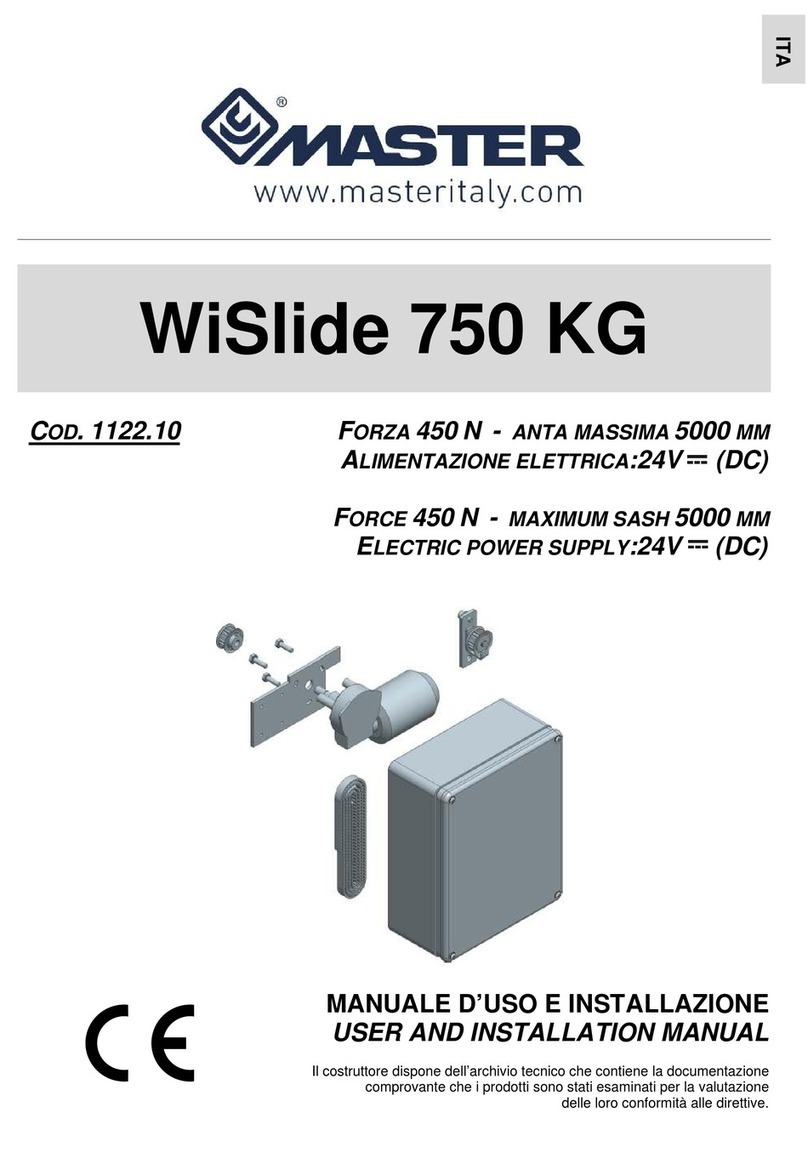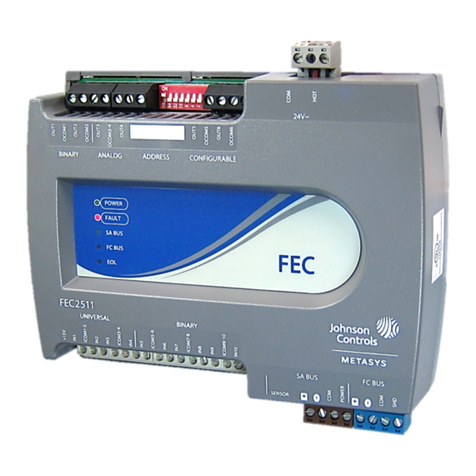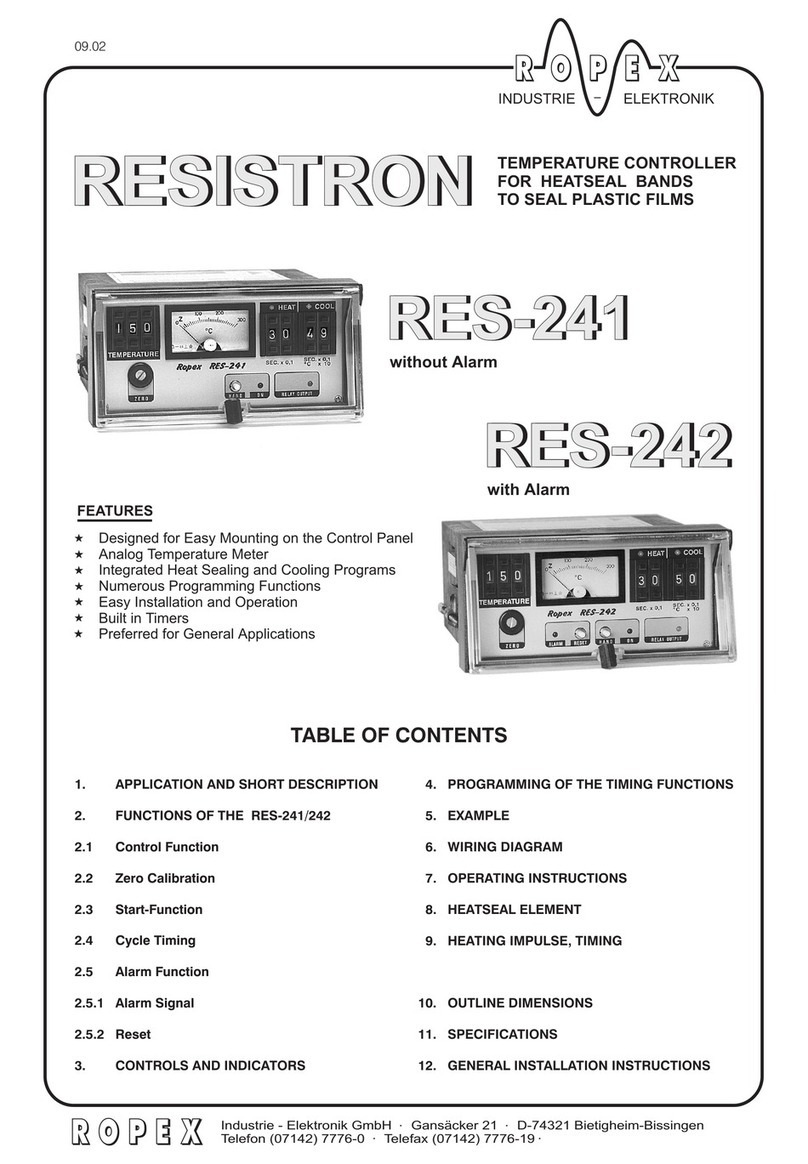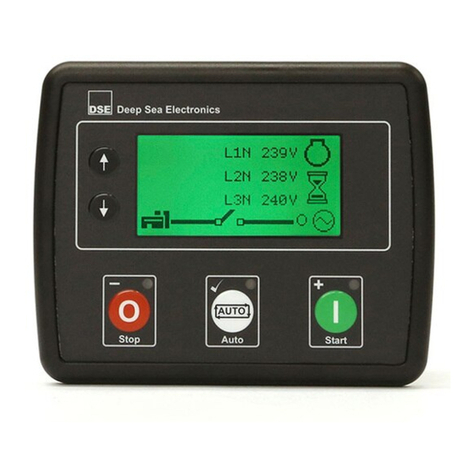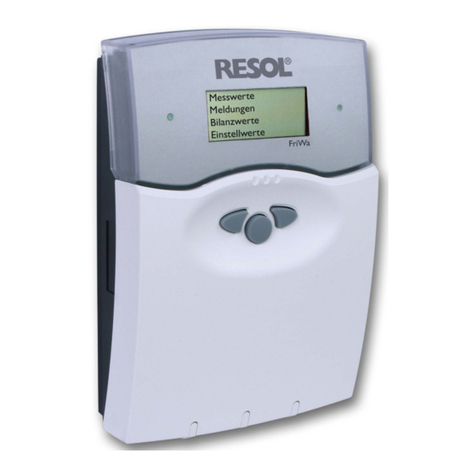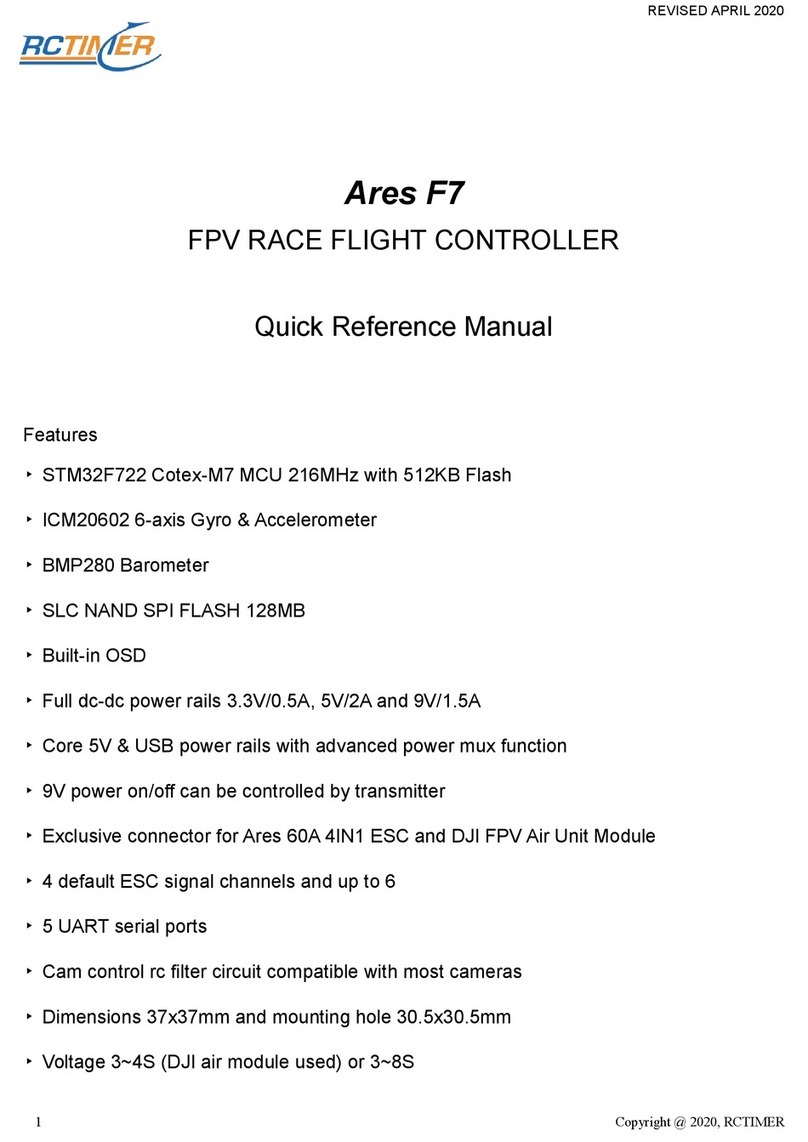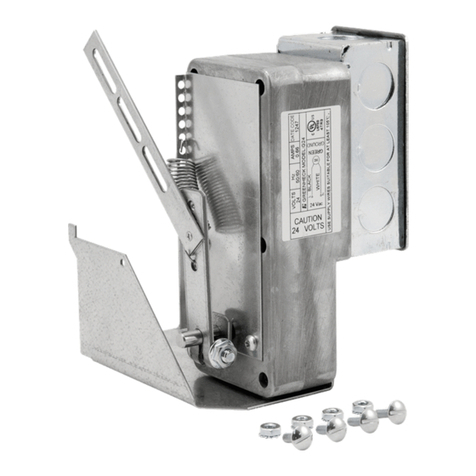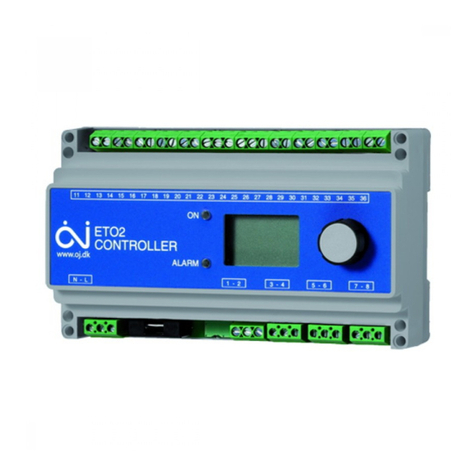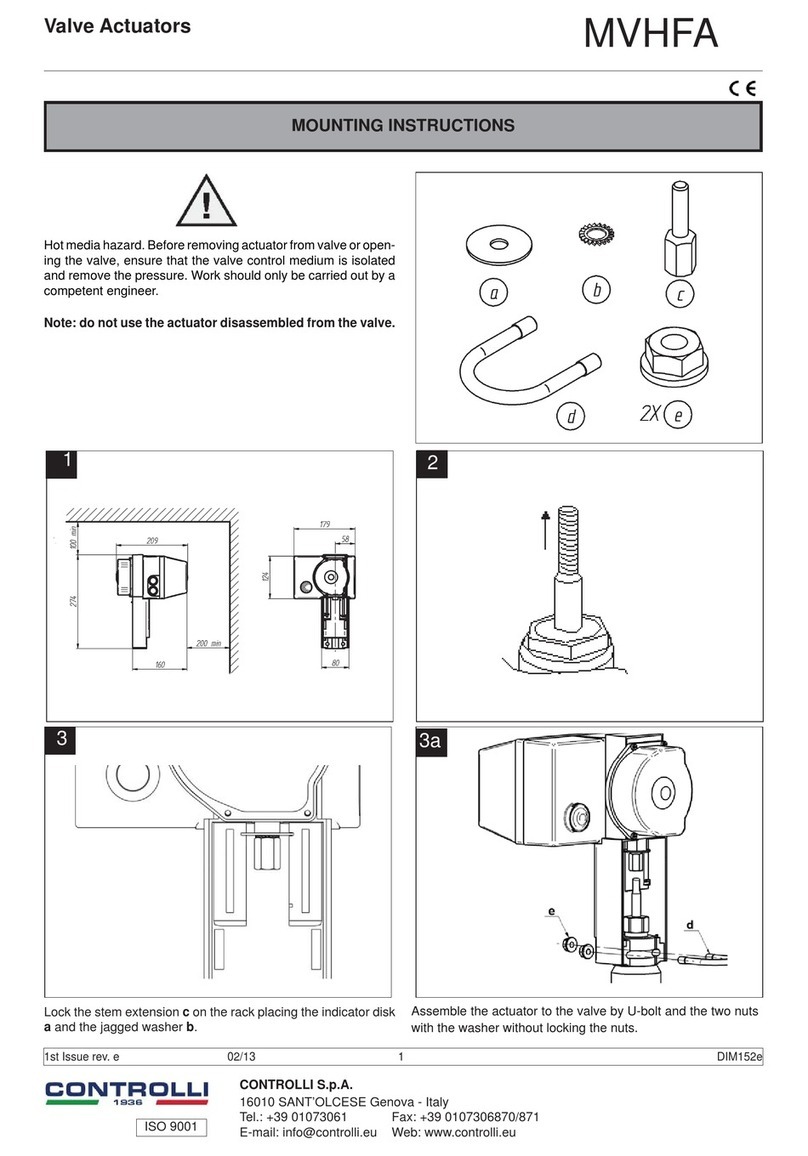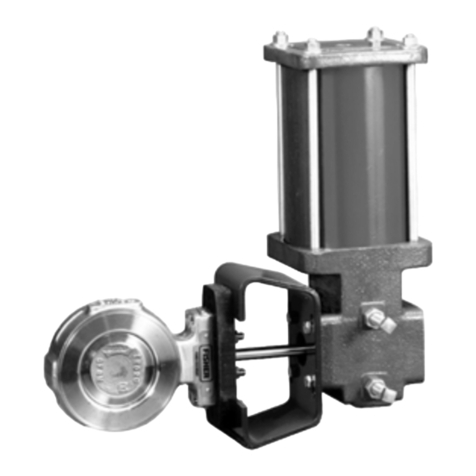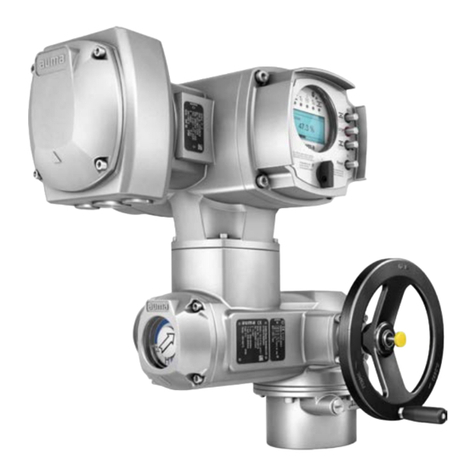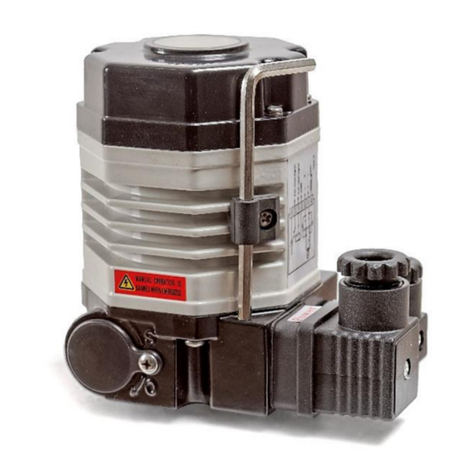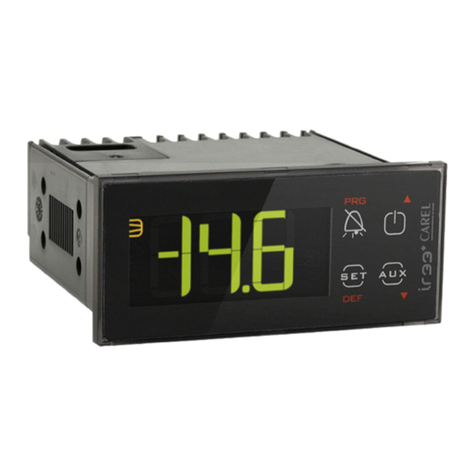BIFFI RPD Series User manual

Copyright © Bif. The information in this document is subject to change without notice. Updated data sheets can be obtained from our website www.bif.it or from your nearest Bif Center:
Bif Italia s.r.l. - Strada Bif 165, 29017 Fiorenzuola d'Arda (PC) – Italy PH: +39 0523 944 411 – bif_italia@bif.it
Bif RPD
Double-Acting Pneumatic Actuators
Installation, Operation and Maintenance Manual
MAN 575 Rev. 4
July 2020

Installation, Operation and Maintenance Manual
MAN 575 Rev. 4
Revision Details
Revision Details
Rev. Date Description Prepared Checked Approved
4 July 2020 General update (Migration to new template)
3April 2016 Updated applicable regulation (chapter 1.1.1) Ermanni Oreci Vigliano
2 October 2014 Updated chapters 1.1.2 and 5.4 Ermanni Cristalli Vigliano
1 October 2010 General update Ermanni Stoto Vigliano
0 May 1999 Document release Lazzarini Aliani Ziveri
Revision Details
July 2020

i
Installation, Operation and Maintenance Manual
MAN 575 Rev. 4
Table of Contents
Table of Contents
July 2020
Table of Contents
Section 1: General Warnings
1.1 Generalities ................................................................................................... 1
1.1.1 Applicable regulation ......................................................................... 1
1.1.2 Terms and conditions ......................................................................... 2
1.2 Identication Plate ........................................................................................ 2
1.3 Introducing the Actuator ............................................................................... 3
1.4 Data Sheet .................................................................................................... 4
Section 2: Installation
2.1 Checks Upon Actuator Receipt ...................................................................... 5
2.2 Actuator Handling ......................................................................................... 5
2.3 Storage ......................................................................................................... 6
2.4 Actuator Assembly on the Valve .................................................................... 7
2.4.1 Types of Assembly .............................................................................. 7
2.4.2 Assembly Procedure ........................................................................... 9
2.5 Pneumatic Connections .............................................................................. 10
2.6 Electrical Connections (If Any) ..................................................................... 10
2.7 Commissioning ........................................................................................... 11
Section 3: Operation and Use
3.1 Operation Description ................................................................................. 12
3.2 Residual Risks .............................................................................................. 15
3.3 Operations .................................................................................................. 15
3.4 Calibration of the Angular Stroke ................................................................ 16
3.5 Calibration of Micro-switches (If Foreseen) .................................................. 18
3.6 Calibration of the Operation Time ............................................................... 19

ii
Table of Contents
July 2020
Installation, Operation and Maintenance Manual
MAN 575 Rev. 4
Table of Contents
Section 4: Operational Tests and Inspections
Operational Tests and Inspections ......................................................................... 20
Section 5: Maintenance
5.1 Periodic Maintenance .................................................................................. 21
5.2 Extraordinary Maintenance ......................................................................... 22
5.2.1 Replacement of Cylinder Seals .......................................................... 22
5.3 Lubrication of Mechanism ........................................................................... 26
5.4 Dismantling and Demolition ....................................................................... 27
Section 6: Troubleshooting
6.1 Failure or Breakdown Research .................................................................... 28
Section 7: Layouts
7.1 Spare Parts Order ........................................................................................ 29
7.2 Parts List for Maintenance and Replacing Procedure .................................... 30
Section 8: Date Report for Maintenance Operations
Date Report for Maintenance Operations .............................................................. 33

Installation, Operation and Maintenance Manual
MAN 575 Rev. 4 July 2020
1
General Warnings
Section 1: General Warnings
Section 1: General Warnings
NOTE:
The manual is an integral part of the machine, it should be carefully read before carrying
out any operation and it should be kept for future references.
1.1 Generalities
Bif Italia s.r.l. actuators are conceived, manufactured and controlled according to the Quality
Control System in compliance with EN-ISO 9001 international regulation.
1.1.1 Applicable regulation
UNI EN ISO 12100-1: 2005: Safety of machinery – Basic notions, general design principles.
Part 1-Basic terminology, method.
UNI EN ISO 12100-2: 2005: Safety of machinery – Basic notions, general design principles.
Part 2-Technical principles and specication.
2006/42/EC: Machine directive
97/23/EC: Directive for pressure PED equipment (until 18 July 2016)
2014/68/EU from 19 July 2016
2006/95/EC: Directive for low voltage equipment (until 19 April 2016)
2014/35/EU from 20 April 2016
2004/108/EC: Directive for the electromagnetic compatibility (until19 April 2016)
2014/30/EU from 20 April 2016
94/9/CE: Directive and safety instructions for use in hazardous Area
(until 19 April 2016) 2014/34/EU from 20 April 2016
NOTICE
Bif Italia s.r.l. pays the highest attention to collecting and verifying the documentation
contained in this user manual. However Bif Italia s.r.l. is not liable for any mistakes
contained in this manual, for damage or accidents due to the use of the latter. The
information contained is of exclusive reserved ownership of Bif Italia s.r.l. and may be
modied without prior notice. All rights reserved.

July 2020
Installation, Operation and Maintenance Manual
MAN 575 Rev. 4
2General Warnings
Section 1: General Warnings
1.1.2 Terms and conditions
Bif Italia s.r.l. guarantees that all the items produced are free of defects in workmanship
and manufacturing materials and meet relevant current specications, provided they
are installed, used and serviced according to the instructions contained in the present
manual. The warranty can last either one year from the date of installation by the initial
user of the product, or eighteen months from the date of shipment to the initial user,
depending on which event occurs rst. All detailed warranty conditions are specied in
the documentation forwarded together with the product. This warranty does not cover
special products or components not warranted by subcontractors, or materials that were
used or installed improperly or were modied or repaired by unauthorized staff. In the
event that a fault condition be caused by improper installation, maintenance or use, or by
irregular working conditions, the repairs will be charged according to applicable fees.
The warranty and Bif Italia s.r.l. liability shall lapse in the event that any modication
or tampering whatsoever be performed on the actuator.
1.2 Identication Plate
It is forbidden to modify the information and the marks without previous written
authorization by Bif Italia s.r.l.
The plate fastened on the actuator contains the following information (Figure1).
Figure 1 Data Plate

Installation, Operation and Maintenance Manual
MAN 575 Rev. 4 July 2020
3
General Warnings
Section 1: General Warnings
1.3 Introducing the Actuator
RPD actuators are pneumatic low pressure Spring-Return, suitable for any quarter-turn
application such as ball, plug, buttery valves or dampers, in both ON-OFF and modulating
heavy-duty service. The actuator is made up of a rack and pinion mechanism, which
transforms the linear movement of the pneumatic cylinder, (on closing or opening), into
the rotary movement for the valve operation. An adjustable bronze sliding block supports
the transverse force exerted on the rack by its engagement with the pinion. The rack is
nitride for ensures the minimal friction. External travel stops allow precise angular stroke
adjustment between 80° and 100°. Totally enclosed, weatherproof housing, made of
nodular cast iron for maximum strength and suitable for use in hostile environments.
The mounting ange is identical on both (upper and lower) faces of the housing; the shaft
output drives have the same dimensions but is positioned at 90°. This allows the actuator
to be used as spring to close or spring to open without modication.
The actuator is assembled onto the valve by connecting the actuator housing ange to the
valve ange by a spool piece and the actuator shaft to the valve stem by a stem extension.
Actuator manual emergency operation in opposition to the spring action, is performed by
rotating the jackscrew by a wrench or by a handwheel (available on request).

X
Y
A
R
R
R
R
A
KK
=
=
=
=
=
=
=
=
=
=
=
=
B
12
4
B
L
JJ
G
D
ØM
ØF
M6
ØE
ØH
ØC ØC
ØE
+ 0,5
0
RP 13-14-15 49,5 49,5 M8 10 16 21 23 66 30 2,7 140 40 M6 4
RP 30 72,1 72,1 M10 12 22 29 25 92 32 2,7 164 50 M6 4
RP 60 88,4 88,4 M12 15 28 37 34 112 42 3,0 204 60 M6 4
RP 120 99,0 99,0 M16 23 37 49 45 132 55 3,0 270 75 M6 4
July 2020
Installation, Operation and Maintenance Manual
MAN 575 Rev. 4
4General Warnings
Section 1: General Warnings
The mounting ange, on the housing top, can be utilized for the assembly of limit switches,
position transmitter, positioner etc., which are actuated by the actuator output shaft.The
actuator housing is provided, on the front face and in the back face (optional), with threaded
holes for the assembly of accessories (control panels, air storage tank, etc.).
The expected lifetime of actuator is approximately 25 years.
Figure 2
Supply uid Air, Nitrogen or sweet gas
Operating temperature Standard: from –30 °C to +100 °C
Optional: from –60 °C to +140 °C
Design pressure 12 bar maximum
Supply pressure Please refer to technical document: “actuator data sheet”
Output torque up to 3700 Nm
1.4 Data Sheet
Table 1.
NOTE:
– All dimensions are in mm.
– Both the actuator anges can be used for the coupling to the valve or the mounting of ancillary
equipments (positioner, limit switch box, etc.).
№4 threaded
holes
№4 threaded
holes
View from Y
Threaded hole ØN
Joint detail
Threaded hole ØN
View from X
Both the actuator anges can be used for valve coupling or the mounting of ancillary
equipment (positioner, limit switch box, etc.).
Actuator Model A± 0,2 B± 0,2 ØC DØE ØF G ØH K J L ØM ØN* R
0
-0,1 0
-0,5 0
-0,2 +0,1
0

Installation, Operation and Maintenance Manual
MAN 575 Rev. 4 July 2020
5
Installation
Section 2: Installation
2.2 Actuator Handling
NOTICE
The lifting and handling should be made by qualied staff and in compliance with the laws
and provisions in force.
! WARNING
The fastening points are appropriate for the lifting of the actuator alone and not for the
valve + actuator assembly. Avoid that during the handling, the actuator passes above the
staff. The actuator should be handled with appropriate lifting means. The weight of the
actuator is reported on the delivery bill.
Section 2: Installation
2.1 Checks Upon Actuator Receipt
• Check that the model, the serial number of the actuator and the technical data
reported on the identication plate correspond with those of order conrmation,
see Section 1.2.
• Check that the actuator is equipped with the ttings as provided for by
order conrmation.
• Check that the actuator was not damaged during transportation: if necessary
renovate the painting according to the specication reported on the order
conrmation.
• If the actuator is received already assembled with the valve, its settings have
already been made at the factory.
• If the actuator is delivered separately from the valve, it is necessary to check,
and if required, to adjust, the settings of the mechanical stops, refer to Section 3.4
and of micro-switches (if any) refer to Section 3.5.

July 2020
Installation, Operation and Maintenance Manual
MAN 575 Rev. 4
6Installation
Section 2: Installation
For a correct lifting procedure, please refer to following Figure.
Figure 3
1 and 2 = Lifting eyelets
2.3 Storage
If the actuator needs storage, before installation follow these steps:
• Place it on a wood surface in order not to deteriorate the area of valve coupling.
• Make sure that plastic plugs are present on the hydraulic and electrical
connections (if present).
• Check that the protection of the control system and of the limit switch box (if any)
are properly closed.
If the storage is long-term or outdoor:
• Keep the actuator protected from direct weather conditions.
• Replace plastic plugs of hydraulic and electrical connections (if any) with metal
plugs that guarantee perfect tightness.
• Coat with oil, grease or protection disc, the valve coupling area.
• Periodically operate the actuator, refer toSection 3.3.

Installation, Operation and Maintenance Manual
MAN 575 Rev. 4 July 2020
7
Installation
Section 2: Installation
Figure 4
1= Points of support
2 = Don't lay the actuator on the tie rods
! WARNING
Don’t lay the actuator on accessories (manual handpump, manual jackscrew,
pneumatic control system, etc.).
2.4 Actuator Assembly on the Valve
2.4.1 Types of Assembly
For coupling to the valve, the housing is provided with a ange with threaded holes
according to Bif standard tables (TN1182 attached). The number, dimensions and
diameter of the holes are made in accordance with ISO 5211.The actuator is provided
with a spool piece and a stem extension for coupling to the valve. The assembly position
of the actuator, with reference to the valve, must comply with the plant requirements
(cylinder axis parallel or perpendicular to the pipeline axis).
NOTICE
To x the actuator to the valve ange must be used the stud bolts and nuts supplied by
Bif! In case the actuator is supplied without stud bolts and nuts the following materials
must be used as a minimum:
• ASTM A 193 Grade L7 for Stud Bolts
• ASTM A 194 Grade 4 for Nuts

RP 13-14-15 49,5 49,5 M8 10 16 21 23 66 30 2,7 140 40 M6 4
RP 30 72,1 72,1 M10 12 22 29 25 92 32 2,7 164 50 M6 4
RP 60 88,4 88,4 M12 15 28 37 34 112 42 3,0 204 60 M6 4
RP 120 99,0 99,0 M16 23 37 49 45 132 55 3,0 270 75 M6 4
July 2020
Installation, Operation and Maintenance Manual
MAN 575 Rev. 4
8Installation
Section 2: Installation
Figure 5
Table 2.
NOTE:
– All dimensions are in mm.
– Both the actuator anges can be used for the coupling to the valve or the mounting of ancillary
equipments (positioner, limit switch box, etc.).
View from X View from Y
№4 threaded
holes
№4 threaded
holes
Threaded hole ØN
Joint detail
Threaded hole ØN
X
Y
A
R
R
R
R
A
KK
=
=
=
=
=
=
=
=
=
=
=
=
B
12
4
B
L
JJ
G
D
ØM
ØF
M6
ØE
ØH
ØC ØC
ØE
+ 0,5
0
Both the actuator anges can be used for valve coupling or the mounting of ancillary
equipment (positioner, limit switch box, etc.).
Actuator Model A± 0,2 B± 0,2 ØC DØE ØF G ØH K J L ØM ØN* R
0
-0,1 0
-0,5 0
-0,2 +0,1
0

Installation, Operation and Maintenance Manual
MAN 575 Rev. 4 July 2020
9
Installation
Section 2: Installation
2.4.2 Assembly Procedure
NOTICE
Failure to comply with the following procedures may impair product warranty.
! WARNING
Installation, commissioning and maintenance, and repair works should be carried out by
qualied staff. A non-conforming assembly could be the source of serious accidents.
For actuator assembly on the valve:
NOTICE
Check that the assembly position, as shown on the documentation, complies with system’s
geometry. Check the consistency of the parts of actuator-valve coupling.
• Operate the actuator so that it reaches the matching valve position, see Section 3.3.
• Lubricate valve stem with oil or grease.
• Properly clean and remove grease from valve coupling ange surfaces.
• Connect, if supplied separately, the stem extension onto the valve stem and fasten
it with the special fastening pins.
• Lift the actuator using the special lifting points, see Section 2.2.
• Install the actuator so that valve stem inserts in the coupling area. This coupling
should be made without forcing.
• Fasten the two parts with the threaded connections (screws, tie rods, nuts).
If holes of coupling anges are not aligned, adequately operate the actuator if
necessary move the mechanical stops backwards, see Section 3.4.
• Fasten threaded connections. Please refer to Table 3.
The screwing values in Table 3 were calculated considering the materials ASTM A320 L7 for
screws or tie rods and ASTM A194 gr.2H for the nuts.
Table 3. Nuts Tightening Torque
Threading Tightening torque (Nm)
M8 20
M10 40
M12 70
M16 160

July 2020
Installation, Operation and Maintenance Manual
MAN 575 Rev. 4
10 Installation
Section 2: Installation
2.5 Pneumatic Connections
Connect the actuator to the pneumatic feed line with ttings and pipes in accordance to
the plant specications. They must be sized correctly in order to guarantee the necessary
air ow for the operation of the actuator, with pressure drops not exceeding the maximum
allowable value.
The shape of the connecting piping must not cause excessive stress to the inlets of the
actuator. The piping must be suitably fastened so as not to cause excessive stress or
loosening of threaded connections, if the system undergoes strong vibrations.
Every precaution must be taken to ensure that any solid or liquid contaminants which
may be present in the pneumatic pipe-work to the actuator are removed to avoid
possible damages to the unit or loss of performance. The inside of the pipes used for the
connections must be well cleaned before use: wash them with suitable substances and
blow through them with air or nitrogen.
The ends of the tubes must be well debarred and cleaned. Once the connections are completed,
operate the actuator and check that it functions correctly, that the operation times meet the
plant requirements and that there are no leakages in the pneumatic connections.
2.6 Electrical Connections (If Any)
! WARNING
The connections should be made by qualied staff. Before carrying out any operation,
cut line power off. Safety provisions as per CEI 64-8 regulation should be complied with
(same as IEC 60364).
Connect the electrical feed, control and signal lines to the actuator, by linking them up with
the terminal blocks of the electrical components. In order to do this, the housing covers
must be removed without damaging the coupling surfaces, the O-rings or the gaskets.
Remove the plugs from the cable entries. For electrical connections use components (cable
glands, cables, hoses, conduits) which meet the requirements and codes applicable to the
plant specications (mechanical protection and/or explosion-proof protection). Screw
the cable glands tightly into the threaded inlets, so as to guarantee the weatherproof
and explosion-proof protection (when applicable). Insert the connection cables into
the electrical enclosures through the cable glands, and connect the cable wires to the
terminals according to the applicable wiring diagram. If conduits are used, it is advisable
to carry out the connection to the electrical enclosures by inserting hoses so as not to
cause anomalous stress on the housing cable entries. Replace the plastic plugs of the
unused enclosure entries by metal ones, to guarantee perfect weatherproof tightness
and to comply with the explosion-proof protection codes (where applicable). Once the
connections are completed, check that the controls and signals work properly.

Installation, Operation and Maintenance Manual
MAN 575 Rev. 4 July 2020
11
Installation
Section 2: Installation
2.7 Commissioning
! WARNING
Installation, commissioning and maintenance and repair works should be made by
qualied staff. Any calibration relative to functional aspects of the actuator are preset
at the factory, except the angular stroke setting because for this setting operation,
the actuator must be placed on to the valve (see Section 3.4) Before any modications
please read Bif Italia s.r.l.
Upon actuator commissioning please carry out the following checks:
• Check that the pressure and quality of the air supply (ltering degree, dehydration)
are as prescribed. Check that the feed voltage values of the electrical components
(solenoid valve coils, micro-switches, pressure switches, etc.) are as prescribed.
• Check that the actuator controls work properly (remote control, local control,
emergency controls, etc.).
• Check that the required remote signals (valve position, air pressure, etc.) are correct.
• Check that the setting of the components of the actuator control unit
(pressure regulator, pressure switches, ow control valves, etc.) meet the
plant requirements.
• Check there are no leakages in the pneumatic connections. If necessary, tighten
the nuts of the pipe ttings.
• Remove all rust and, in accordance with the applicable painting specications,
repair paint-coat that has been damaged during transport, storage or assembly.

July 2020
Installation, Operation and Maintenance Manual
MAN 575 Rev. 4
12 Operation and Use
Section 3: Operation and Use
Section 3: Operation and Use
3.1 Operation Description
The air, or supply uid, pressurizes the cylinder chamber relevant to the operation to carry
out (opening or closing).
This pressure starts the linear motion of the piston and the consequent rotation motion of
the rack and pinion mechanism, to which the valve stem is coupled, in required direction.
For local or remote operations related to the actuator, please refer to technical documentation
furnished with delivery actuators (schematics, overall dimensions and parts list).
NOTICE
Typical general schematics for various applications are follow attached for information only,
various control systems are furnished only at Customer demand.
Figure 6

Installation, Operation and Maintenance Manual
MAN 575 Rev. 4 July 2020
13
Operation and Use
Section 3: Operation and Use
Manual Override for RPD Double-Acting Pneumatic Actuator
Actuator manual emergency operation is performed by rotating one of the two jackscrews
by a wrench or by a handwheel (available on request).
In standard conguration operating the screw mounted in the cylinder end ange results
in valve opening while operating the screw mounted in the housing side wall results in the
valve closing.
To achieve a required manual manoeuvre, prior to operate the proper jackscrew, the
opposite one must be backed off. A lever manual override is available only for small models.
Special handwheel with disengagement system are available on demand.
Figure 7
Figure 8
Declutching manual
handwheel override
(refer to Section 7.2,
Figure 19, Table 11)

2
1
1
4
3
2
5
6
July 2020
Installation, Operation and Maintenance Manual
MAN 575 Rev. 4
14 Operation and Use
Section 3: Operation and Use
ON-OFF service: four way control valve
The diagram shows the simplest On-Off control. The gas supply pressure is applied to one
side of the cylinder and exhausted from the opposite side. When the control valve (2) is
actuated the connections of supply and exhaust to the cylinder chambers are reversed.
The control valve can have many types of actuating devices (solenoid, manual control,
pneumatic pilot, spring, etc.). The spring return control valves allow "fail safe" operation.
Figure 9
ON-OFF service: Air Fail Safe System
This system allows "fail safe" operation when the pressure in the gas supply line drops below
a set value. The diagram shows the actuator (1 ) in the "fail safe" condition. When the gas
supply pressure drops below the pressure switch (5) set point, the pneumatic supply to the
solenoid valve (6) pilot is exhausted and the actuator moves to the "fail safe" position by
using the gas stored in the tank (4). The tank is connected to the gas supply through the
check valve (3).
Figure 10
Manual
control
Pnematic pilot
control
Dual solenoid
control
pressurized air
atmospheric pressure air
Solenoid control
pressurized air
pressurized air (low pressure)
atmospheric pressure air

23
4
1
5
Installation, Operation and Maintenance Manual
MAN 575 Rev. 4 July 2020
15
Operation and Use
Section 3: Operation and Use
Modulating service
When modulating control is required as a function of a pneumatic or electric control signal,
a positioner (5) is used, which controls the supply to the actuator cylinder to keep the valve
in the required angular position. The positioner has a mechanical linkage to the actuator,
for a feedback of the valve position.
Figure 11
electropneumatic
positioner
pneumatic
positioner
pneumatic
control signal
electric
control signnal
pressurized air (supply)
reduced pressure air (opening chamber)
reduced pressure air (closing chamber)
3.2 Residual Risks
! WARNING
The actuator has parts under pressure. Use the due caution. Use the due caution.
Use individual protections provided for by the laws and provisions in force.
3.3 Operations
The operations are carried out sending the proper signal through the control system in
compliance with Customer specications.
Please refer to the functional diagram and specic documentation supplied.

July 2020
Installation, Operation and Maintenance Manual
MAN 575 Rev. 4
16 Operation and Use
Section 3: Operation and Use
3.4 Calibration of the Angular Stroke
It is important that the mechanical stops of the actuator (and not those of the valve) stop
the angular stroke at both extreme valve position (fully open and fully closed), except when
this is required by the valve operation (e.g. metal seated buttery valves).
The setting of the angular stroke is performed by adjusting the travel stop screws of the
cylinder end ange and of the housing wall.
The setting of the open valve position is performed by adjusting the travel stop screw on
the left side of the actuator (screwed in the housing wall for spring to close actuators or in
the cylinder end ange for spring to open actuators).
The setting of the closed valve position is performed by adjusting the travel stop screw
on the right side of the actuator (screwed in the cylinder end ange for spring to close
actuators or in the housing wall for spring to open actuators).
For the adjustment of the travel stop screws proceed as follows:
(please refer to Figures 12 and 13 on following page)
1. Loosen the lock nut with wrench C2
2. If the actuator angular stroke is stopped before reaching the end position
(fully open or closed), unscrew with wrench C1 the travel stop screw by turning
it anticlockwise, until the valve reaches the right position. When unscrewing the
travel stop screw, keep the lock nut still with a wrench so that the sealing washer
does not withdraw together with the travel stop screw
3. Tighten the lock nut refer to Table 4 to avoid accidental unscrewing of the lock-nut)
4. If the actuator angular stroke is stopped beyond the end position (fully open or
closed valve), screw the stop screw by turning it clockwise until the valve reaches
the right position
5. Tighten the lock nut (refer to Table 4 to avoid accidental unscrewing of the lock-nut)
Table 4.
Actuator Model Thread Wrench C2 (mm) Torque (Nm)
RPD 15 M30X2 41 150
RPD 30 M40X2 50 350
RPD 60 M45X2 55 500
RPD 120 M50X2 60 800
This manual suits for next models
4
Table of contents
Other BIFFI Controllers manuals
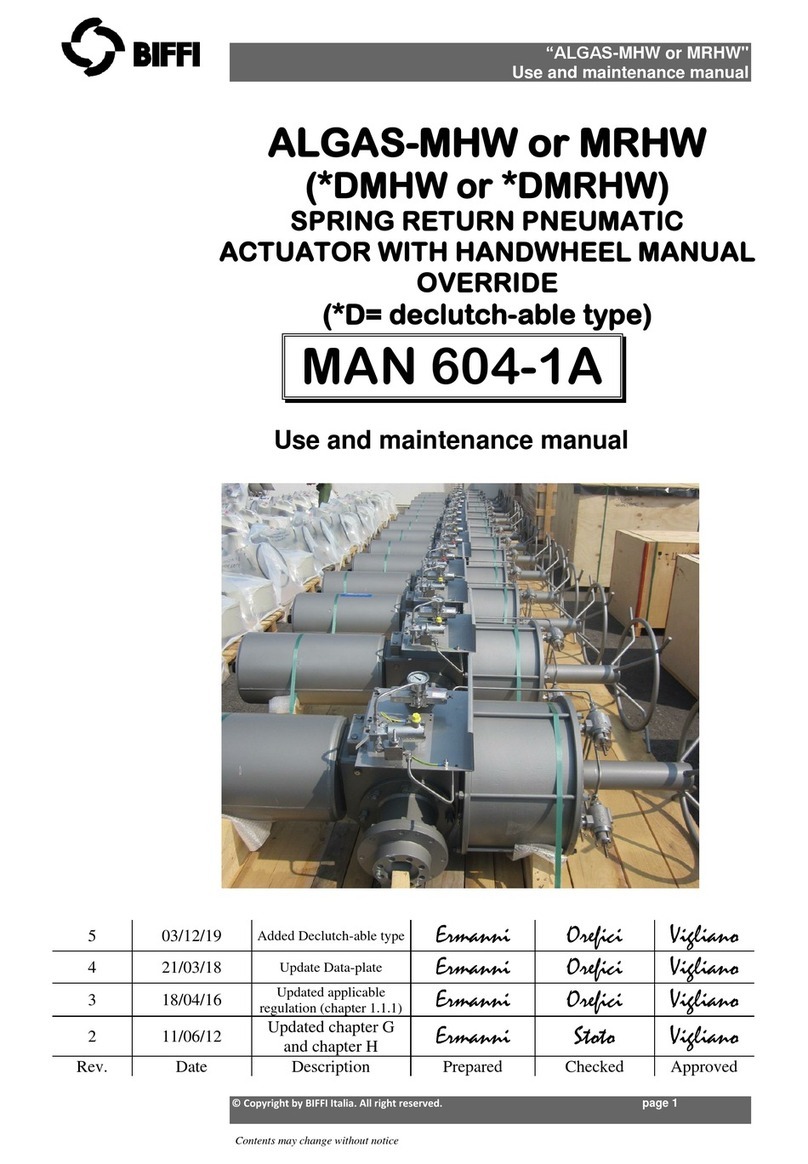
BIFFI
BIFFI ALGAS-MHW User manual
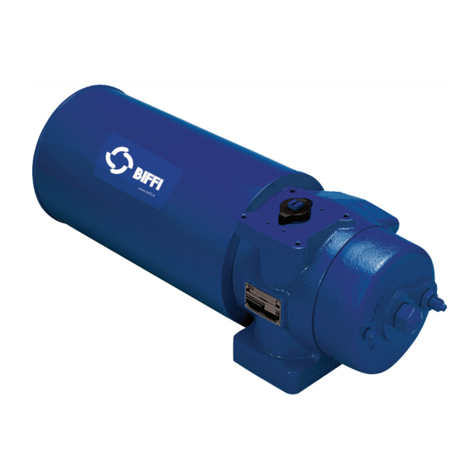
BIFFI
BIFFI FCB Series Operating instructions
BIFFI
BIFFI ICON3000 Series User manual
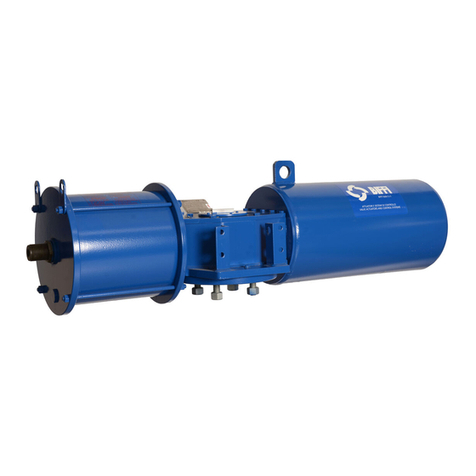
BIFFI
BIFFI ALGAS User manual
BIFFI
BIFFI ICON3000 Series Setup guide
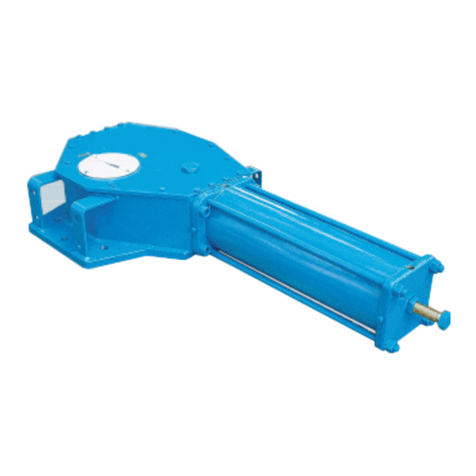
BIFFI
BIFFI OLGA Series User manual
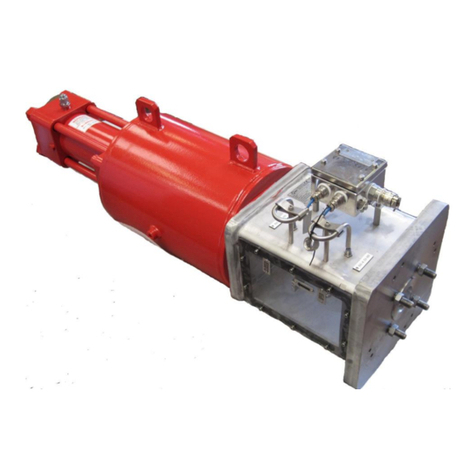
BIFFI
BIFFI HLAS User manual
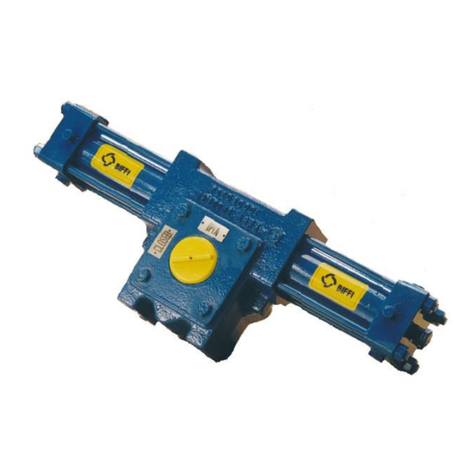
BIFFI
BIFFI RPHD User manual
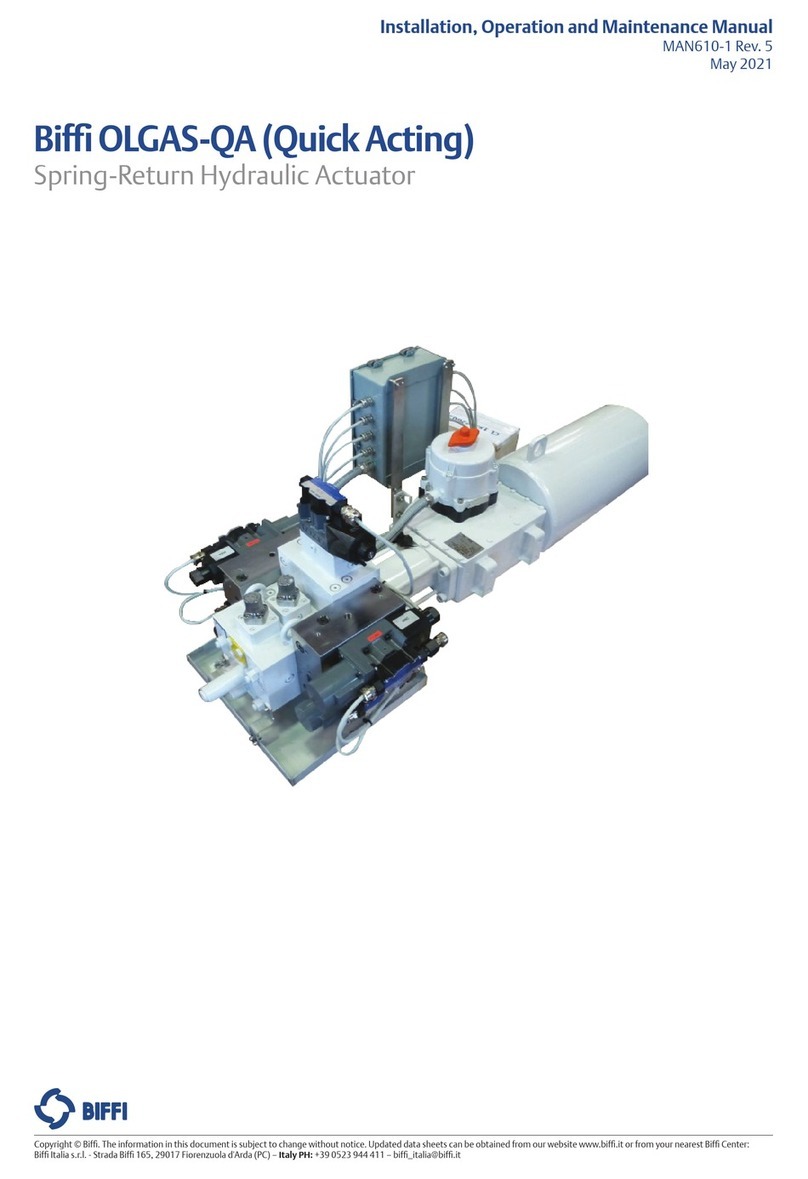
BIFFI
BIFFI OLGAS-QA User manual
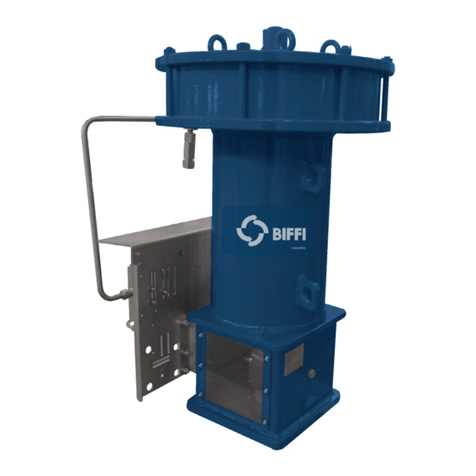
BIFFI
BIFFI PLAS Series User manual
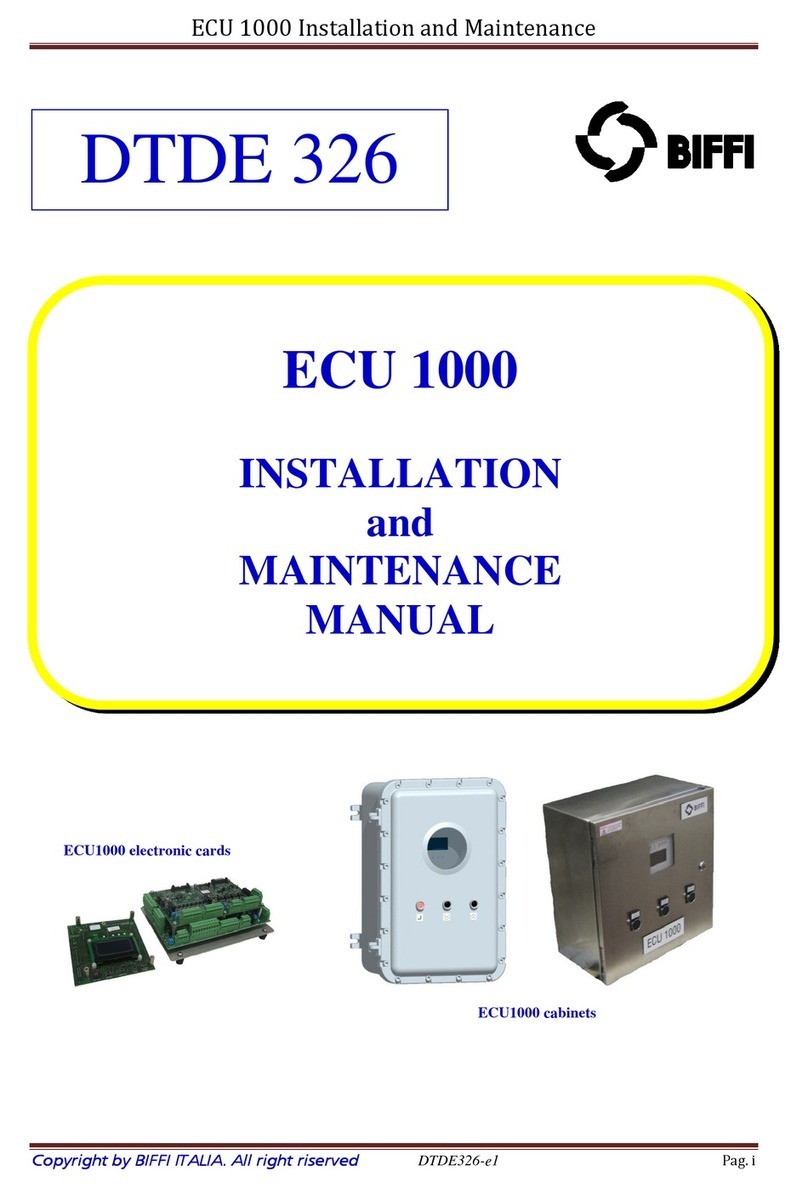
BIFFI
BIFFI ECU 1000 Manual
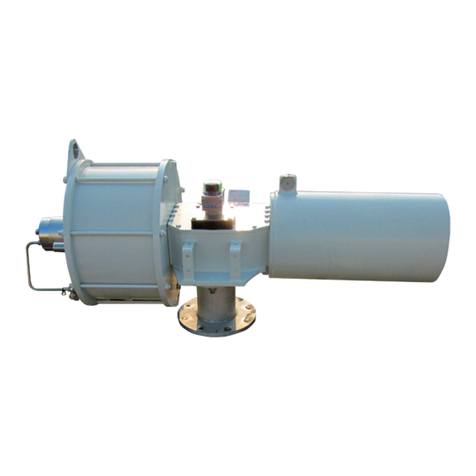
BIFFI
BIFFI ALGAS-QA Series Manual

BIFFI
BIFFI GPO-EAC User manual
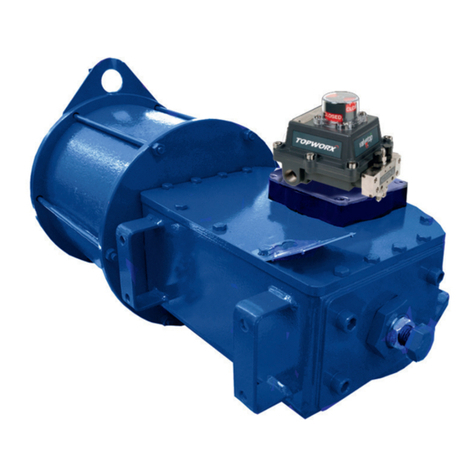
BIFFI
BIFFI ALGA Series User manual

BIFFI
BIFFI ALGA-EAC Series User manual
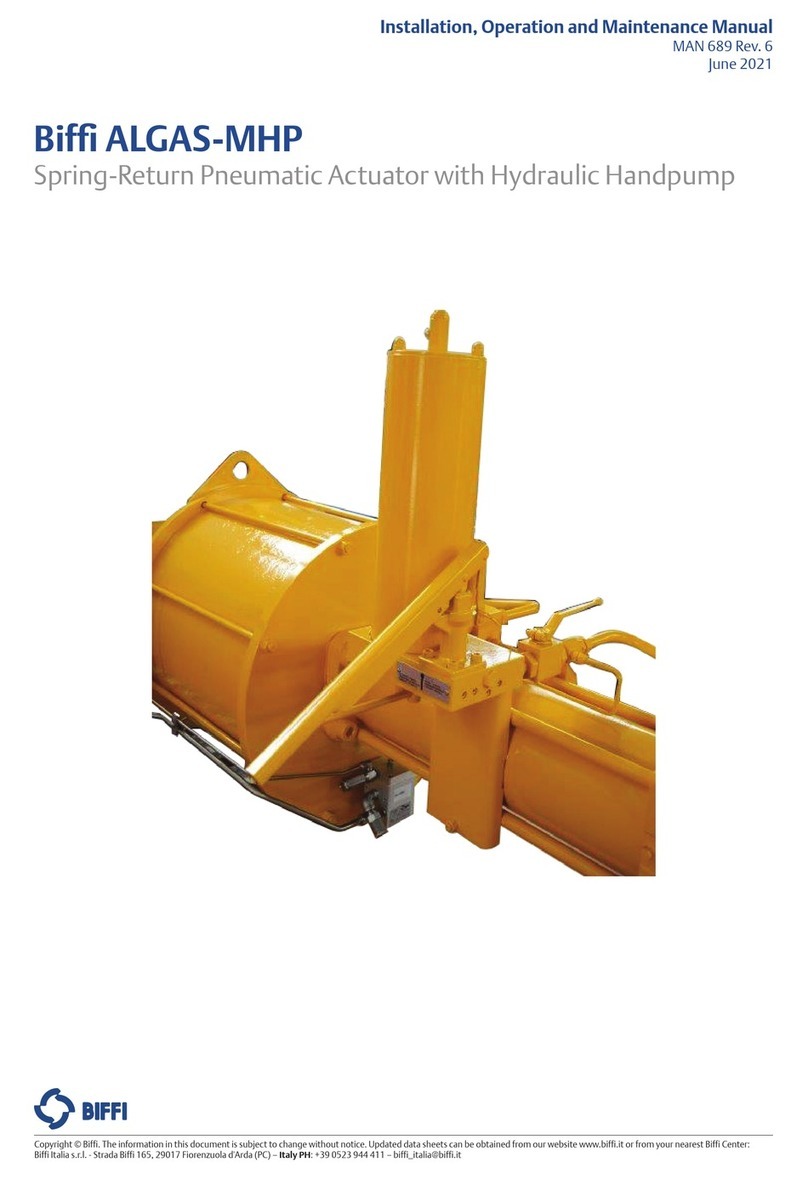
BIFFI
BIFFI ALGAS-MHP User manual
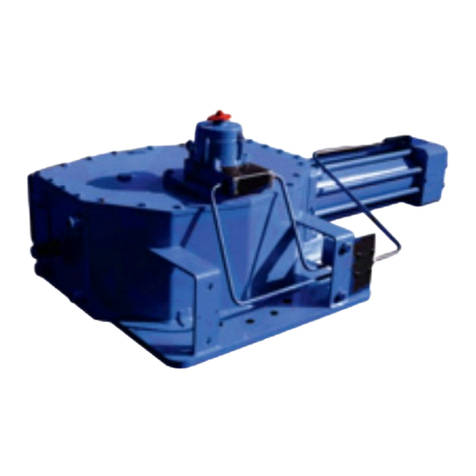
BIFFI
BIFFI OLGA-H User manual
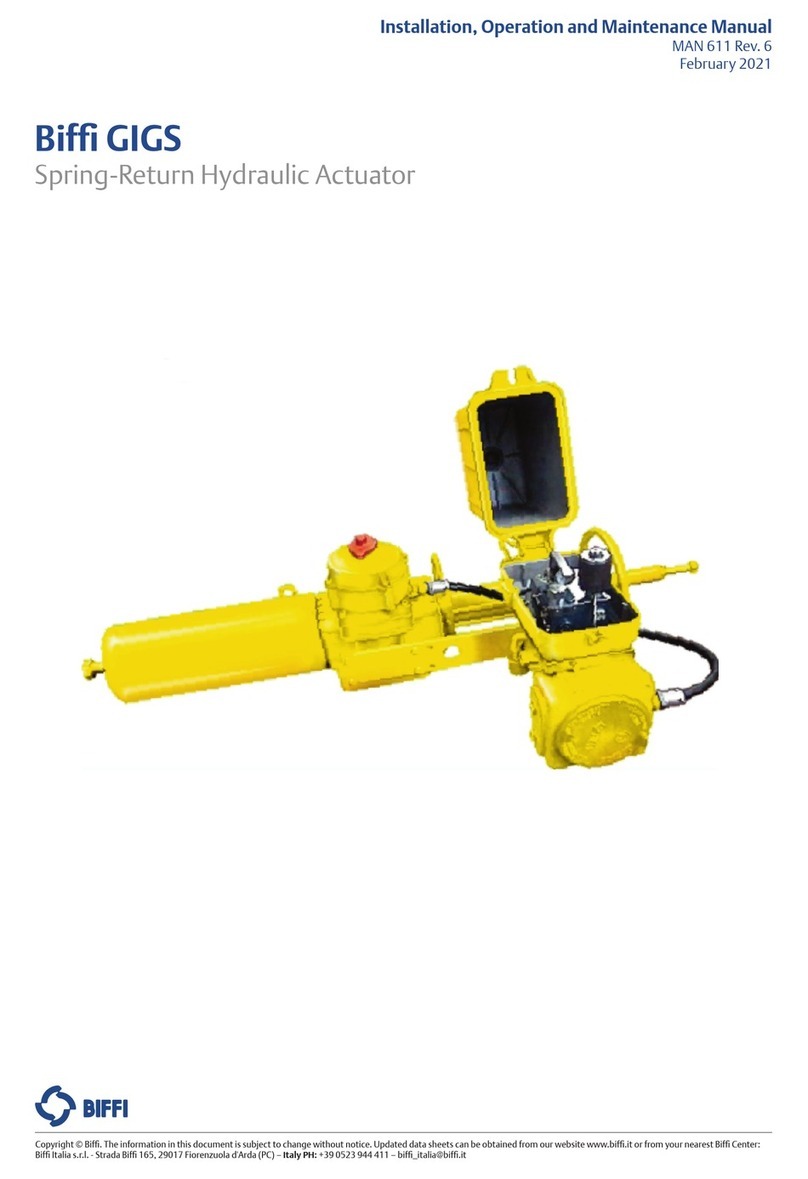
BIFFI
BIFFI GIGS Series User manual
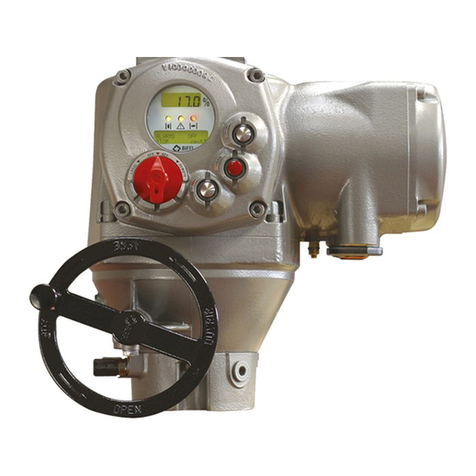
BIFFI
BIFFI F01-2000 User manual
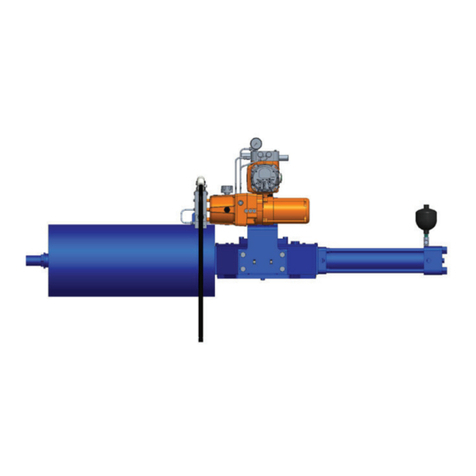
BIFFI
BIFFI EHO User manual

